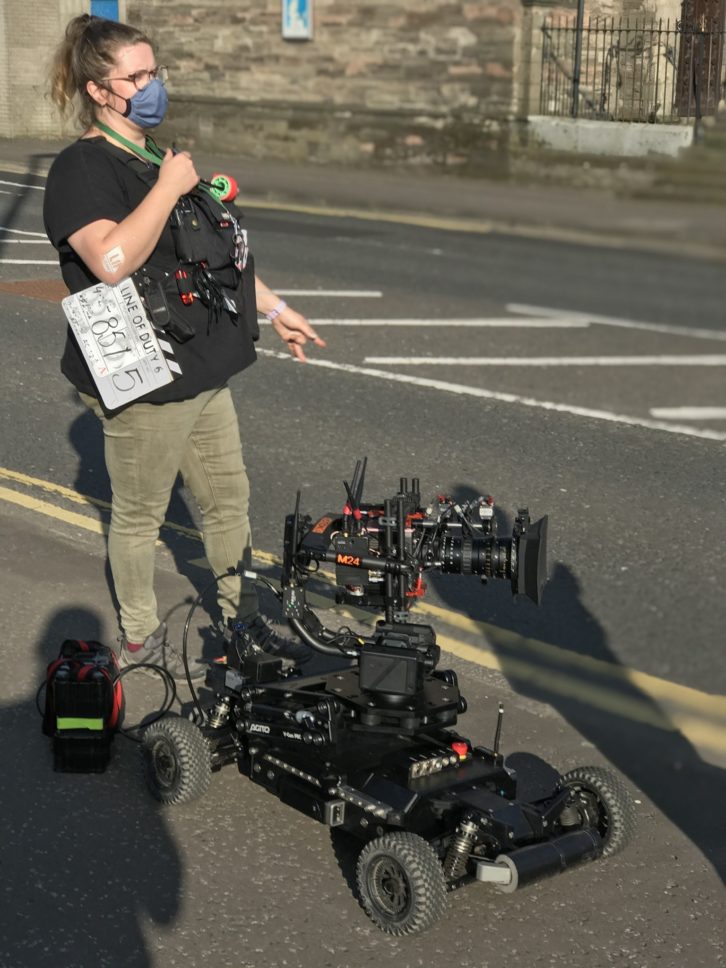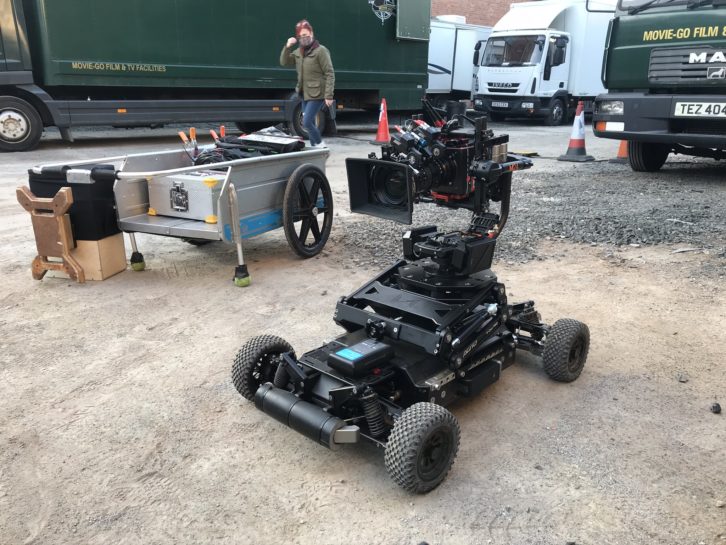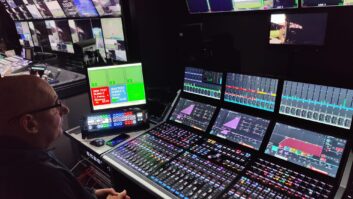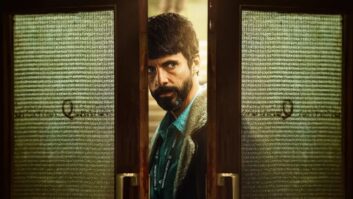Developed by wildlife cameraman Rob Drewett, AGITO is a modular dolly system first launched to the industry in 2020. Most recently, it’s been used by Motion 24, a company that specialises in moving camera systems, on the eagerly awaited sixth series of BBC drama, Line of Duty.
AGITO (which means ‘I move’ in Latin) can be used in two ways: either as a four-wheel movement platform for stabilising and moving cameras, or it a version that runs on rails. Drewett came up with the idea for the system six years ago when he was looking for something that would give him freedom of movement with his camera, but in a what he describes as a stabilised, cinematic way. He began searching the internet for someone who could help him develop a remote-controlled vehicle, and that’s when he found his business partner, Andy Nancollis.
The pair first developed a system called Buggy Cam, which Drewett describes as “literally a remote-controlled car. We stripped the car down and built a low level, fast moving camera rig,” he tells TVBEurope. “Once that had been developed we started to look at different angles for the camera, not just low down. So, we put a post in the middle to allow the camera to be higher.
“Then virtual reality started to boom in the industry and 360 cameras needed a platform that they could be moved on. Of course, with virtual reality you can see everything, and so every time you were working on a shot you had to make sure you moved out the way. So we had to think about all these types of ways of putting new technology into the system.”

From this, AGITO was born. Drewett and Nancollis wanted to make it oven-ready so users operators would be able to use it easily. “We made the system as modular as possible and so it accepts different RF systems, and different types of wheels. It can drive pretty slow or pretty fast, up to about 30 miles per hour, but it also moves very much like a dolly. When we designed the product we had a few different areas where we thought it could work, feature films, sports, live entertainment and wildlife. That means we’ve had to adapt it to all of those ways of filming. We also wanted the camera to move up and down, like a Steadicam, so we put a telescopic post in the middle. The gimbal sits on top of the telescopic post so you can actually move cameras up and down, moving them around people like you can on a Steadicam.”
AGITO caught the eye of Motion 24, which has used the system on Line of Duty, Sky’s A Discovery of Witches and some commercial projects. “What AGITO does is very in line with what we’re about and the area of the industry that we service,” explains James Davis, camera operator and one of the founders of Motion 24. “We specialise in awkward, highly technical and difficult to achieve shots. So the AGITO fits our modus operandi in terms of the type of things that our clients tend to come to us for. As soon as we announced that we had that capability we got a lot of interest from our existing customer base, who were really keen to get it out to shoots and see what we could do with it.”
One of those projects was the BBC’s critically acclaimed drama, Line of Duty. For the new series, AGITO was used primarily for one particular stunt (no spoilers). “The big thing for AGITO on this particular job was its low profile nature and ability to hide within the shot whilst another camera operated as well,” explains Davis. “We were able to use it without disturbing the shot of the other camera and tracking vehicle. It opened up a lot of freedom for us to have two cameras running in that situation, because without AGITO you would open up a lot production costs by having to composite out the other camera or the other tracking vehicle, or you simply would have had to do the stunt more than the amount of times that we did, which would have also cost more. In effect it actually sped up the process for the production team to achieve the shot, and allowed them to get more for their money and more for their time within the same shooting period.”

One of the other plus points of the system is that as it’s remote controlled, the operator doesn’t have to be up and close and personal all the time. “We haven’t tested it at its maximum range, but I think at one point the guys were a third of a mile away or so with no issues. As far as I’m aware, I think we can get quite close to a mile line of sight range, which matches all of our remote heads and video gear,” adds Davis. “We’ve also built our own custom made FPV camera system which we’ve added on as our own extra. It’s essentially a little front and back camera system that the driver can see through on a remote monitor when they’re operating.
“There was a shot we did on Discovery of Witches where the driver could not actually see the vehicle. He was operating entirely from the remote cameras that we had fitted on the vehicle to allow him to see what it was doing and where it was going. That really is a new era of remote operating because the AGITO and FPV drones are really the only types of equipment out there where you can operate them from an entirely different location to where you’re shooting and see what you’re doing and what you’re shooting at the same time.”
Another key feature for Davis is AGITO’s flexibility. “It’s such a capable machine, it has such a level of control you can use it even within tight interior environments, like slow moving conversation pieces,” he explains. “You can use it in place of a dolly, in place in a Steadicam in certain situations. Its versatility really is a big selling point. It’s almost like a filmmaking Swiss Army Knife or multi-tool because it can double up and cover off what a lot of different pieces of equipment can do. It can really work in a lot of environments and that’s really what appealed to us, it’s not just a one trick pony.”







